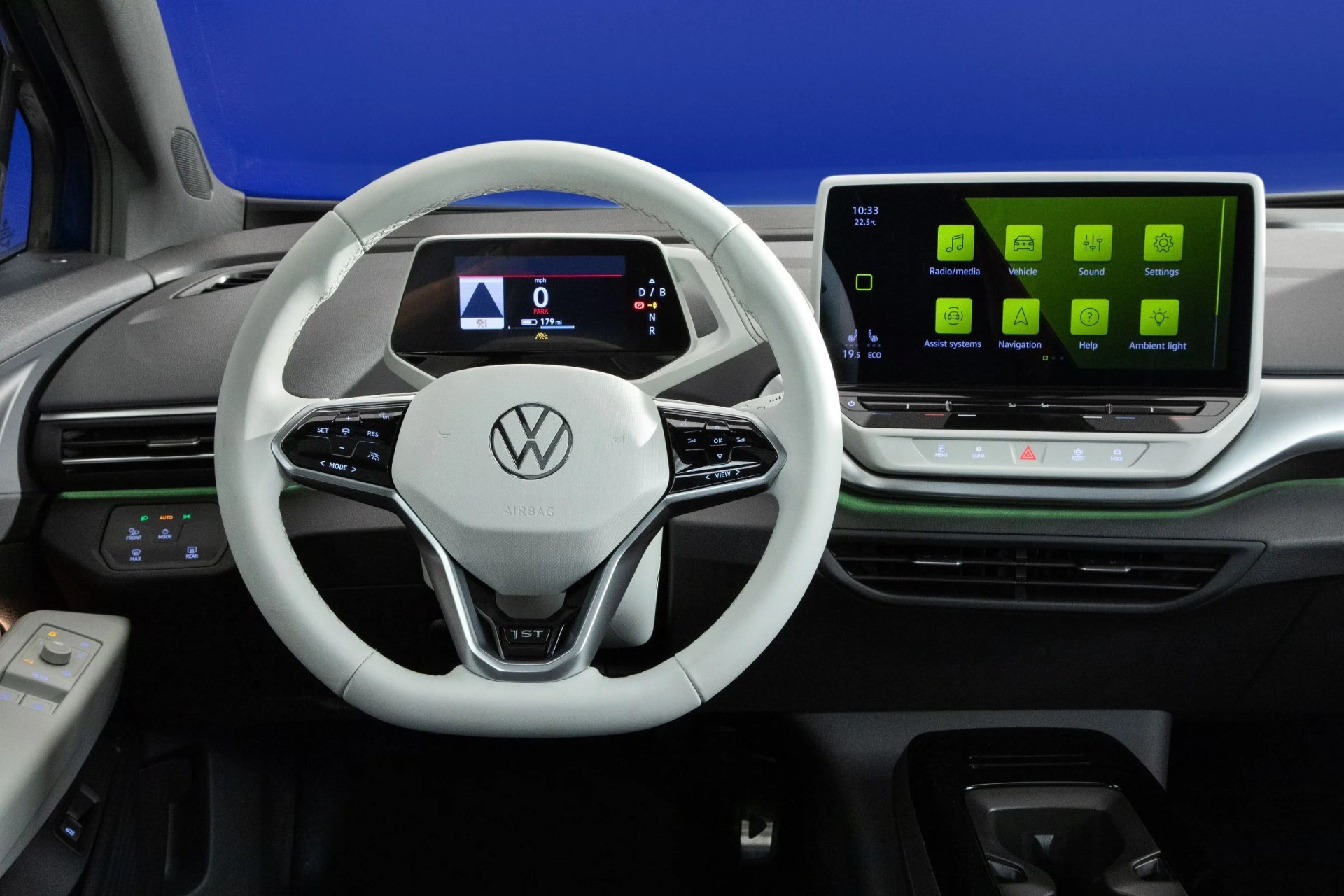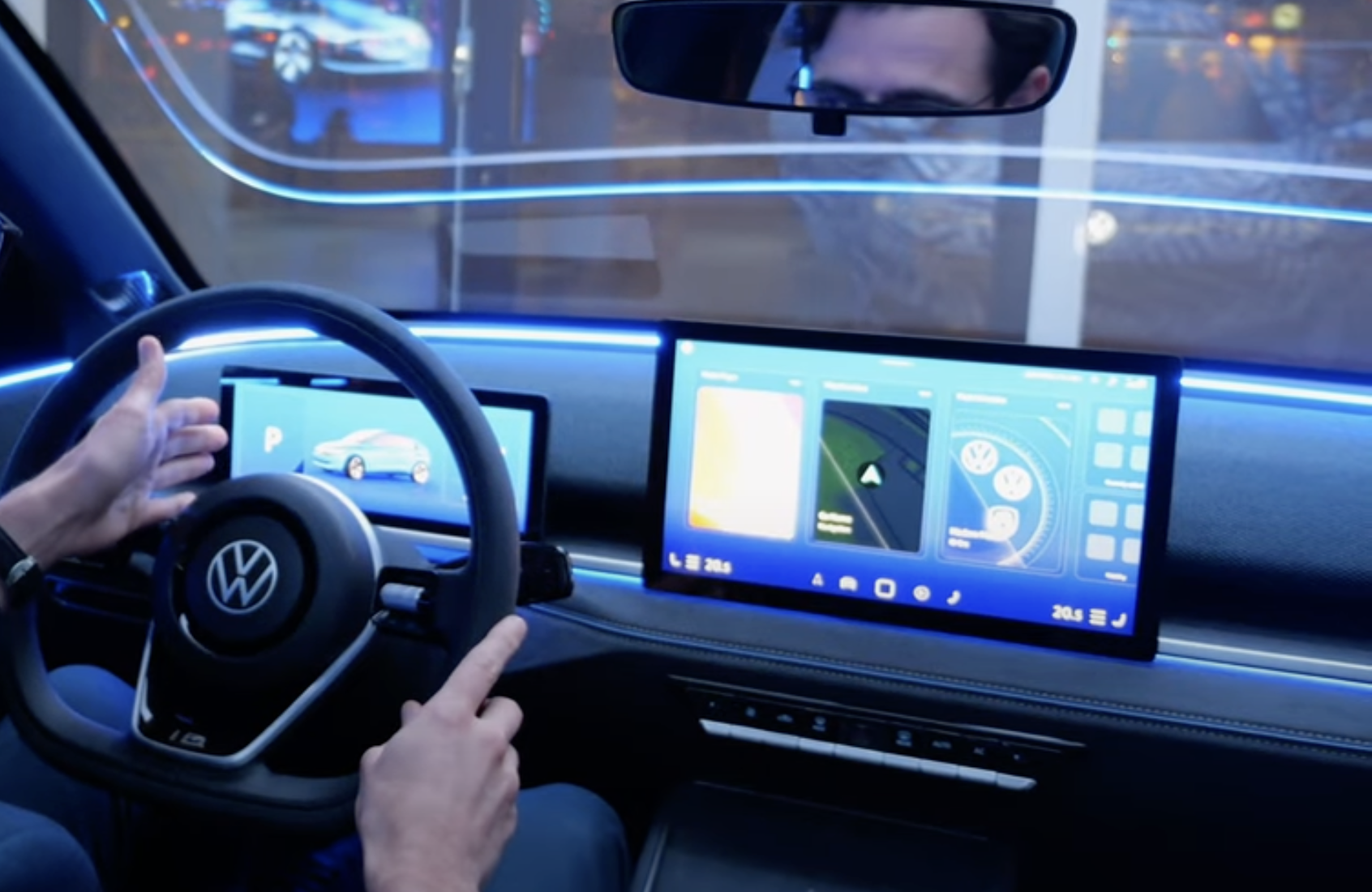I’ve owned Volkswagens for more than 10 years. The first car I bought as an adult was a used 2008 two-door VW Rabbit (a.k.a. Golf) hatchback. I upgraded to a used 2016 Golf Sportswagen when my family began to expand. But in the intervening years, I’ve gone from a VW proponent to a bit of a skeptic. When looking for a new car now, it’s tough to say there’s a VW that’s even on my radar.
See, here’s the thing: Volkswagen has dramatically shifted its priorities and choices since I was last in the market. The brand has deemphasized building driver’s cars on a budget and now builds predominately spacious and soft SUVs for American tastes — cars it’s hard to be an enthusiast about. But even the cars I still like have a glaring weakness: the interior.
 VW
VWVW’s current “digital cockpit” is a nightmare
Whether it’s the ID.4, the Golf GTI or the upcoming ID. Buzz, VW has shifted to a new digital cockpit concept. The interiors don’t go full Tesla, thankfully, but they lean heavily on the touchscreen and swap out physical buttons and dials for haptic ones. Most importantly — and most annoyingly — the effort has been poorly executed.
The remnant haptic controls and sliders are far from ergonomically wise. They make vital functions challenging to use while operating the vehicle, And that’s if you can see the controls with the non-existing backlighting. And that’s before we get to more specific quibbles, like putting a touch-sensitive heated steering wheel button right next to where your palm rests on the GTI.
Compounding that issue is the touchscreen itself. Iterations of the software I’ve tested have been laggy, hard to see without taking your eyes completely off the road (all the buttons are in one color, with thin line graphics delineating them), and just downright unintuitive. My drive partner and I had to ask for help to adjust the fan in the 2024 Atlas — a process that required diving into multiple sub-menus.



